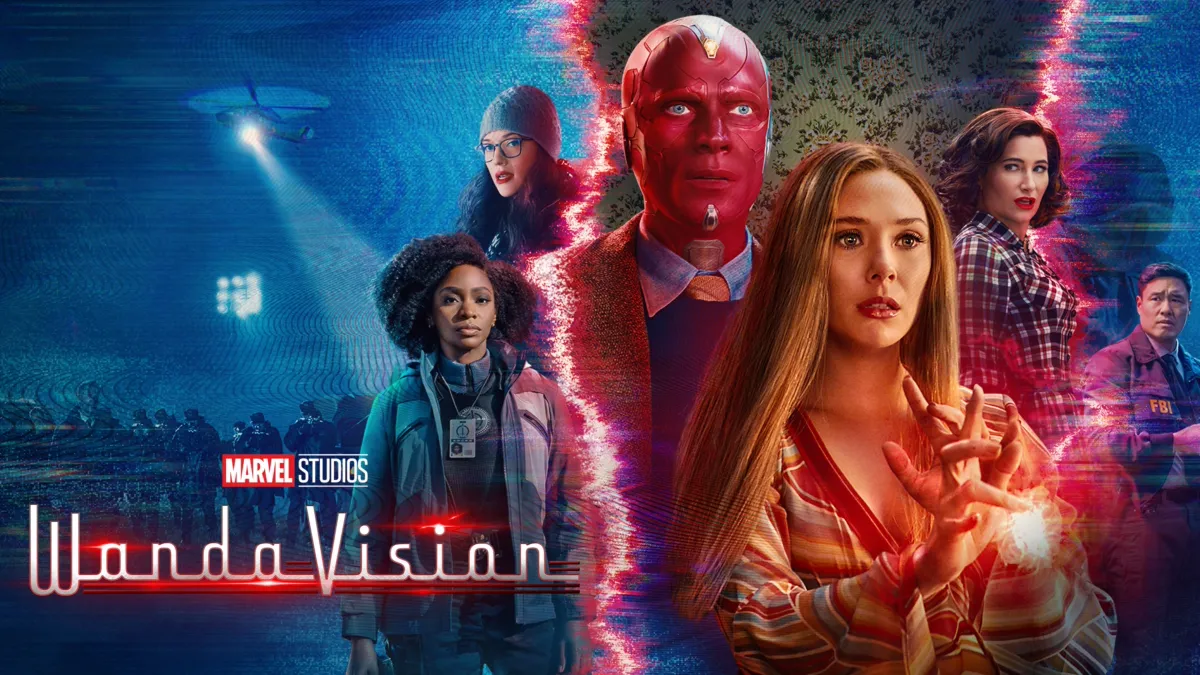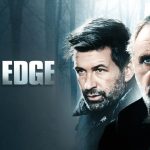WandaVision (2021)

“WandaVision,” highlighting its strengths, themes, and impact:
Storytelling and Structure
“WandaVision” takes an inventive approach by structuring its narrative around classic sitcom formats, starting with a 1950s-style episode and progressing through the decades. This unique storytelling choice not only serves as a nostalgic nod to television history but also cleverly reflects Wanda’s state of mind. Each episode subtly shifts in tone and style, mirroring the evolution of sitcoms while weaving in deeper layers of tragedy and loss.
Character Development
Wanda Maximoff: Elizabeth Olsen delivers a powerful performance, portraying Wanda’s multifaceted emotions—joy, despair, and anger. As the series unfolds, we see her grapple with the aftermath of Vision’s death and her own unresolved trauma. Wanda’s transformation into the Scarlet Witch is both a culmination of her journey and a poignant exploration of how grief can manifest in destructive ways.
Vision: Paul Bettany’s portrayal of Vision is equally compelling. He embodies both the charm of the character and the confusion of his existence within Westview. The duality of his character, caught between being a loving husband and a sentient being questioning his reality, adds depth to the narrative.
Supporting Characters: The supporting cast enriches the story significantly. Kathryn Hahn shines as Agatha Harkness, providing both comedic relief and a formidable antagonist. Her character adds layers of complexity to the narrative, revealing the darker aspects of magic and power. Teyonah Parris as Monica Rambeau brings strength and resilience, serving as a bridge between the ordinary world and the extraordinary circumstances surrounding Wanda.
Themes
“WandaVision” delves into profound themes, including:
- Grief and Loss: The series poignantly illustrates how individuals cope with loss, showcasing Wanda’s denial and eventual acceptance of her reality.
- Identity and Agency: It raises questions about identity—both Wanda’s as a hero and as a person—and the agency she has over her own life. The show examines how circumstances can strip away control, forcing characters to confront their truths.
- Reality vs. Illusion: The contrast between the idyllic suburban life and the darker truths lurking beneath highlights the tension between appearance and reality, a recurring theme in both the MCU and classic storytelling.
Visual and Aesthetic Appeal
The series is visually stunning, with each episode crafted to reflect the era it represents. The meticulous attention to detail—from costumes and set design to the filming techniques used—immerses viewers in the world of Westview. The transition from black-and-white to vibrant color as the story progresses symbolizes Wanda’s emotional journey and growth.
Conclusion
Overall, “WandaVision” is a groundbreaking series that expands the boundaries of superhero storytelling. It combines humor, nostalgia, and poignant emotional arcs to create a rich narrative tapestry. The character-driven plot, innovative structure, and thematic depth make it a standout within the Marvel universe, setting a high bar for future projects.
The series not only entertains but also resonates on a personal level, encouraging viewers to reflect on their own experiences with grief, love, and resilience. “WandaVision” is a testament to the power of storytelling, solidifying its place as a must-watch in the evolving landscape of superhero media.











